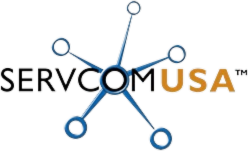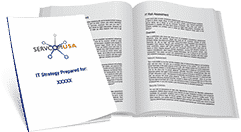Migrating to the cloud can be a daunting task for businesses and organizations, but with the right strategies and planning, it can be a seamless transition that offers numerous benefits.
Microsoft 365 is a popular cloud-based productivity suite that enables organizations to work more efficiently and collaboratively. However, migrating to Microsoft 365 cloud requires careful planning and execution to ensure a smooth transition.
In this article, we will provide you with a step-by-step guide for planning and executing your Microsoft 365 cloud migration. We will cover the different migration strategies available and key considerations to ensure a seamless transition.
Whether you are a small business or a large organization, this guide will help you migrate to Microsoft 365 cloud with confidence.
Key Takeaways
- Planning is key to a successful Microsoft 365 cloud migration.
- There are different migration strategies available, such as cutover migration, staged migration, and hybrid deployment.
- Communication and training are critical for ensuring a smooth transition for your organization.
Planning Your Microsoft 365 Cloud Migration
Migrating to Microsoft 365 can be a complex process, but with proper planning and execution, it can be a smooth and seamless transition. In this section, we will discuss the key steps involved in planning your Microsoft 365 cloud migration.
Assessing Your Current Environment
Before you begin your migration, it’s important to assess your current environment to identify any potential issues that may arise during the migration process.
This includes assessing your current infrastructure, applications, and services, as well as identifying any dependencies and workloads that may need to be migrated.
Developing a Migration Strategy
Once you have assessed your current environment, the next step is to develop a migration strategy. This involves identifying the migration path that best suits your organization’s needs, as well as determining the roles and permissions required for the migration.
It’s also important to consider any security and compliance requirements that may impact your migration strategy.
Creating a Detailed Migration Plan
With your migration strategy in place, the next step is to create a detailed migration plan. This should include a timeline for the migration, as well as a breakdown of the migration tasks and responsibilities.
It’s important to consider any organizational standards and guidelines when creating your migration plan, as well as any business units that may be impacted by the migration.
Executing the Migration
Once you have planned your migration strategy and prepared your environment, it’s time to execute the migration. This section will guide you through the steps to complete a successful migration.
Preparing the Microsoft 365 Tenant
Before you start the migration, you need to prepare your Microsoft 365 tenant. This includes creating user accounts, setting up networking and identity, configuring policies, and subscribing to the necessary services.
You can use cloud-native tools such as Azure AD Connect and the Microsoft 365 Admin Center to deploy and implement these configurations.
Data Migration and Workload Transition
The next step is to migrate your data and workloads to Microsoft 365. Depending on your migration scenarios, you can use different migration tools such as the SharePoint Migration Tool, the Exchange Online Migration Tool, or third-party migration tools.
You can choose to lift and shift your workloads or modernize them to take advantage of the agility and productivity of the cloud.
Testing and Validation
Once the migration is complete, you need to test and validate the migrated data and workloads. This includes monitoring performance data, testing networking and identity, and validating the secure and productive collaboration of your apps and services.
You can use the Microsoft 365 Admin Center, Azure Monitor, and other feedback and monitoring tools to test and validate your migration.
Going Live and Post-Migration Support
After testing and validation, you can go live with your migrated workloads. You should provide post-migration support to your users and monitor the production environment for any issues or feedback.
You can use landing zones, metadata, and other policies to promote a smooth and efficient migration and ensure that your mission-critical apps and services are running smoothly in the cloud.
Frequently Asked Questions
How can an organization prepare for a Microsoft 365 migration?
Before embarking on a Microsoft 365 migration, it is essential to conduct a thorough assessment of your organization’s existing IT infrastructure.
This assessment should include an inventory of all hardware and software, as well as an analysis of your organization’s current business processes. Additionally, it is important to identify the key stakeholders who will be involved in the migration process and establish clear lines of communication.
What are the best practices for data security during a cloud migration?
Data security is critical during a cloud migration, and there are several best practices that organizations should follow.
These include encrypting sensitive data both in transit and at rest, using multi-factor authentication to protect user accounts, and implementing access controls to ensure that only authorized users can access sensitive data. It is also important to conduct regular security audits to identify and address any vulnerabilities in your organization’s IT infrastructure.
Which workloads should be prioritized when migrating to Microsoft 365?
When migrating to Microsoft 365, it is important to prioritize workloads based on their criticality to your organization’s operations.
For example, email and collaboration tools are often essential to business operations, and should be prioritized accordingly. Other workloads, such as legacy applications, may be less critical and can be migrated at a later time.
What are the potential challenges in moving to Microsoft 365 and how can they be mitigated?
Moving to Microsoft 365 can present several challenges, including data loss, downtime, and user resistance.
To mitigate these challenges, it is important to conduct thorough testing and validation of your migration strategy, establish clear communication channels with stakeholders, and provide training and support for users throughout the migration process.
How does one ensure minimal downtime during the Microsoft 365 migration process?
To minimize downtime during the Microsoft 365 migration process, it is important to establish a detailed migration plan that includes a timeline for each phase of the migration.
Additionally, it is important to conduct thorough testing of your migration strategy prior to implementation, and to have a contingency plan in place in the event of unexpected issues.
What post-migration steps are critical to ensure successful adoption of Microsoft 365?
After completing a Microsoft 365 migration, it is important to conduct user training and provide ongoing support to ensure successful adoption of the new platform.
Additionally, it is important to establish clear governance policies to ensure that users are following best practices for data security and compliance.


